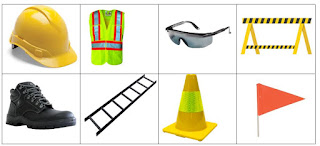Excavation Work Method Statement and Procedure
The Excavation is the mechanism of establishing space utilizing removing Earth and that Earth could be soil or rock to construct any structure. Various approaches are available to accomplish excavation. In all process, excavation safety has an essential and decisive execution. Some suitable and prominent approaches of excavation are:
- The open excavations structure.
- Thrust Boring
- Horizontal Directional Drilling (HDD)
- The Micro tunneling structure for Pipe Jacking
- The Pile foundations and diaphragm walls type
- The Vibro Stone Columns (VSC)
- Raise Boring Approach Type
- Tunneling

The Open Excavation
The open excavation is a surface excavation suited and useful up to 6.0 meter deep. On the other side, the trench excavation is also an open excavation type, but the depth eclipses the width of excavation. Open excavation is mainly utilized for Infrastructure, installing pipes and cables for utility services, test trenches or pits, borrow pits and road developments. Open excavation is considered to be one of the most hazardous construction operations. Among excavation related variety of dangerous occurrences, cave-ins pose the highest risk. A huge quantity of constructions fatal and critical accidents happened during the excavation. Therefore, it’s very essential to prepare a safe work method statement for carrying out any excavation work activity.
The Purpose of the Method Statement
Any open excavation that is deeper than 1.5 meter needs side stability by sloping, benching or shoring. This method statement elaborates the excavation safety requirements and safe work procedure for all open excavations categories. This method statement guides the workforce involved in this excavation work activity to:
- Conduct and complete works in a manner that’s safe and secure at all times
- Always know the hazards presented in the excavation activity
- Make sure that all controls of hazard exposure are in place.
Utilize other resources, means and techniques not referred to in this method statement to suit the project requirement. Always conduct the work or activity safely following the appropriate required standard. The sequence of excavation work activities is a repetitive process and many hazards are common to distinct worksites. Include with detail, any essential information specific to the project. Always adopt the approved excavation checklists before the start of the work.
This Method Statement Includes:
The scope of current Method Statement:
- Safe and secure work method and technique for conducting open excavation activity
- Substance, materials, equipment, and tools required to conduct the excavation work
- Applicable appropriate required standards throughout the execution of the excavation project
The standard for Execution Safety
Trenching and Excavation Safety (OSHA 2226-10R 2015)
Personal Protective Equipment (PPE)

Procedures for Excavation
- Get relevant information, data and other required resources of subsurface soil and water table location
- Design excavation sides and protective system based on the size of excavation and type of soil by carrying out all preventive measures.
Three Main Methods to Protect Excavation Sides Are Following:
- Sloping the walls: Sloping of the walls for excavation preventive safety initiatives
- Bench Excavation: Benching technique for excavation safety
- Supported excavation: By shoring up the excavation walls with wood or metal supports
The Supported Excavation
- Mechanically or manual finalize the excavation and soil removal method
- Locate underground services and installations like electric cables, Optical fiber cables, Pipeline etc. with detecting devices e.g., cable and pipe detectors.
- Make proper estimation for any possibility of chemical hazard or low oxygen levels
- Take permission as required from the underground services installation operator
- Obtain Permit to Work (PTW) for excavation activity
- Properly barricade the excavation area to keep vehicles, equipment, machinery and workforce away from the excavation
- Make appropriate arrangements for lighting.
- Examine and observe the arrangements with a skilled person prior start of excavation activity
- Carry out the manual excavation activity until exposure to underground services and installations.
- Allow mechanical excavation only after exposure to underground services and installations.
- Make appropriate safe and secure access & egress arrangements for workers, equipment, tools and machinery at least from two sides
- Excavation and its closed surrounding areas should be kept free from water. Water in an excavation can weaken the surfaces of the excavation. Use the dewatering system whenever water accumulates. If needed, put necessary shoring to protect workforce working.
- Conduct the balance excavation with machinery, for example, excavators.
Precautions for Safe Excavation
- Within the range of 2.0 meters’ distance of excavation edge, permit only excavation equipment and tools.
- Don’t allow any other equipment near the excavation edge because the weight of the machines can destruct trench walls.
- Cranes should maintain a maximum safe distance equal to the depth of excavation from the edge of the excavation
- Deposit excavated soil along with other materials or substances at least 0.61 meters from the edge. put soft barricades for pedestrians at least 1.0 meter from the edge. Scaffold posts, loose materials and or substances along with any loads shall be at a distance of 1.5 times excavation depth away from the edge. Provide proper hard barricades for vehicles at least 2.0 meter from the edge.
- Only authorized and permitted persons should enter in the excavation
- Keep flagman with a red flag in congested and risky areas to guide vehicles traffic
- Keep signalman to guide equipment operating properly and safely
- Utilize blinking warning lights where the pedestrian or vehicular traffic is expected.
- Provide extra bracing and shoring in the locality of the source of vibration such as Pile driving rigs to prevent slides, slips or cave-in where excavations.
- Provide one ladder per 15 meters of length and extend the ladder for one meter over the top of the cut
- Block the workforce/persons in the path of an excavator turning bucket
- Stop the lone workers without proper supervision
- Wherever the presence of pests and insects is possible, make proper arrangements for repellents, fumigation and first aid as required.
- Daily conduct earthwork inspection
General Excavation Safety Hazards
- Soil muddy condition
- Becoming sidewalls unstable due to water content excessive rainfall
- Vibrations from nearby heavy machinery such as railroad and blasting
- The overload force by adjacent buildings
Excavation Safety Checklists
- Approved excavation drawing available
- Presence of underground services
- Barrication, safety signage, and lighting are properly in place
- Excavation slope prevention system finalization such as sloping, shoring or benching
- Proper entry and exit sources for the workforce, equipment and machinery
- Arrangements for dewatering system wherever water is expected.
- Flagmen are appointed at required areas to guide vehicular traffic
- Emergency procedures are in place
- Excavation Permit to Work (PTW) available


